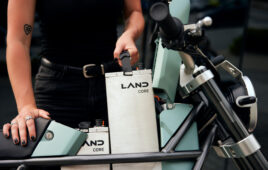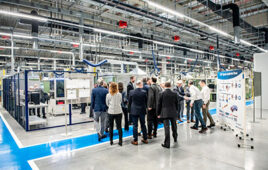According to research company BloombergNEF’s (BNEF) newly released 2022 Carbon capture, usage, and storage (CCUS) Market Outlook, the global capacity for carbon capture in 2030 is set to increase sixfold from today’s level, to 279 million tons of CO2 captured per year. Drastic growth in the market has led to a 44% increase in expected 2030 capacity compared to last year’s outlook.
CCUS is a key technology needed to decarbonize hard-to-abate sectors such as petrochemicals and cement, and to provide 24/7 clean power through gas plants fitted with capture equipment. Still, despite significant acceleration in the sector in the past two years, the world’s capacity for carbon capture is not being deployed fast enough to meet climate goals at the end of the decade, according to BNEF research.
Today, most capture capacity is used to collect CO2 from natural gas processing plants and used for enhanced oil recovery. By 2030, most capture capacity will be used for the power sector, for the manufacture of low-carbon hydrogen and ammonia, or to abate emissions from industrial sources.
The CO2 being captured today is 43 million tons, or 0.1% of global emissions. If all likely announced projects come online, there would be 279 million tons of CO2 captured every year by 2030, accounting for 0.6% of today’s emissions.
The destination for captured CO2 is also due to change significantly from the status quo. In 2021, some 73% went to enhanced oil recovery operations. By 2030, storing CO2 deep underground will overtake oil recovery as the primary destination, with 66% going to dedicated storage sites. This change is being driven by legislation that incentivizes storage over CO2 usage, and by projects that aim to use carbon capture and storage (CCS) as a decarbonization route and must store the CO2 to meet their goals.
“CCS is starting to overcome its bad reputation,” said David Lluis Madrid, CCUS analyst at BNEF and lead author of the report. “It is now being deployed as a decarbonization tool, which means the CO2 needs to be stored. A lack of CO2 transport and storage sites near industrial or power generation point sources could be a major bottleneck to CCS development. But we are already seeing a big increase in these projects to serve that need.”
The industry is still far from making a dent in global emissions. To be on track for net-zero and less than 2° C of warming by 2050, between 1-2 billion tons of CO2 would need to be captured in 2030, an order of magnitude higher than current plans.
The Inflation Reduction Act passed in the U.S. increased tax credits for CCUS by 70%, making a viable business case for the technology in petrochemicals, steel, cement, and in some regions, power. Incentives like these mean that countries, such as the US, will remain global leaders for CCUS. The U.S. tax credits are now very generous, and the law is set to supercharge project announcements in the ethanol and petrochemicals sectors, as well as in direct air capture (DAC), to provide high-quality carbon offsets for the voluntary market.
“This 279 million tons of capacity in 2030 is just the tip of the iceberg,” said Julia Attwood, head of sustainable materials at BNEF. “We haven’t seen the full impact of these credits yet, making this outlook a fairly conservative view of the future of carbon capture and storage. We expect to see another jump in announcements in 2022, especially in the U.S. as developers there rush to make sure they meet the 2032 deadline for credits.”
BloombergNEF
about.bnef.com
Filed Under: Green engineering • renewable energy • sustainability




